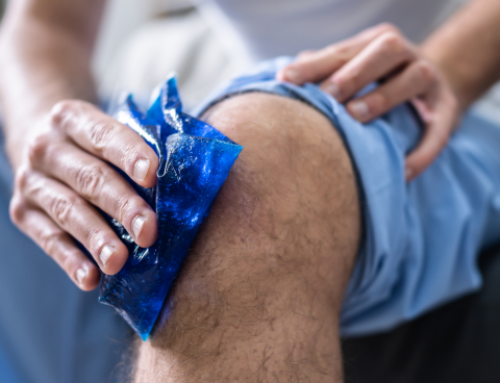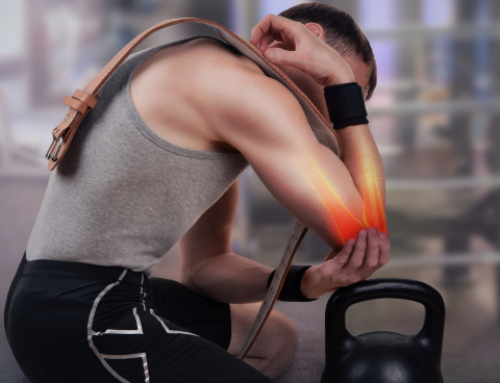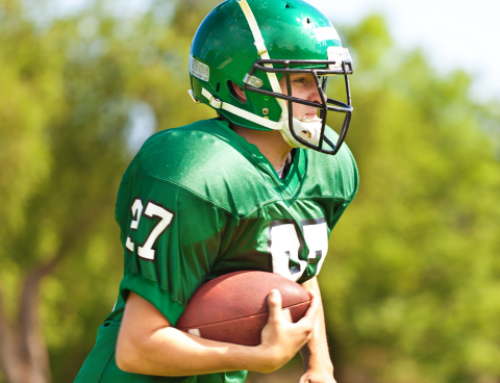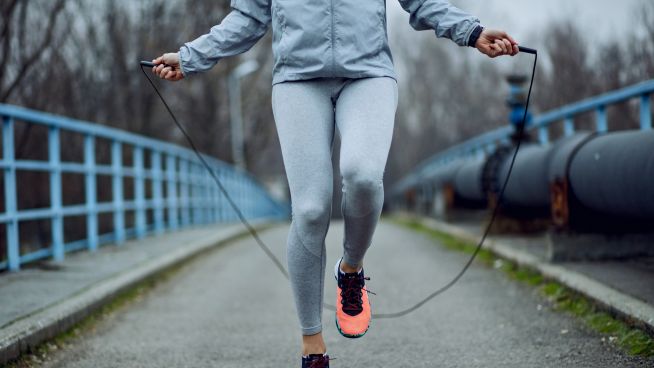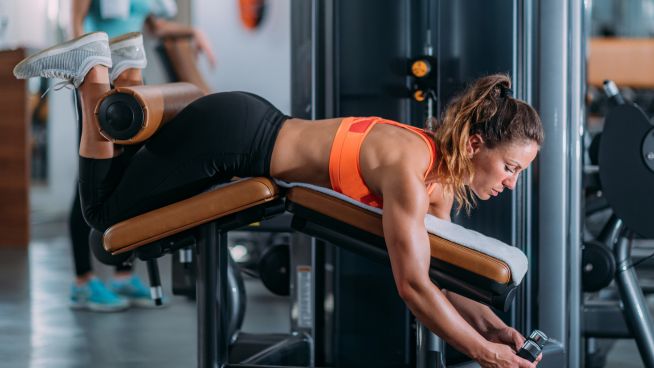How to Handle an Acute Injury While Training
Working out is supposed to make you stronger, healthier and feel better. But it’s also an activity that can leave you vulnerable to injury. You’ll be working with heavy equipment, sometimes in restrictive or busy areas, and you’ll be pushing the limits of your abilities. If you aren’t careful, you could suffer an emergency injury.
So how should you respond if that happens to you or someone around you?
The Importance of Prevention
A handful of small steps should be enough to protect you from most injuries in the first place:
- Warm up properly. Before you start pushing yourself in a workout, make sure you warm up properly. Spend some time letting your muscles loosen and relax, and gradually build up to your most demanding exercises.
- Take on only what you can handle. If you’re new to working out, stick to exercises you’re already familiar with, and try not to push yourself more than a half-step beyond what you’re already capable of. Overexertion is a leading cause of injury.
- Work with a spotter. If you’re lifting heavy weights, work with a spotter. They’ll help keep you protected. Here’s a guide on how to safely spot 7 common exercises.
- Use the right equipment. Use equipment only for the purposes for which it was intended. If you aren’t sure how a machine works, ask a gym attendant or someone more experienced than yourself to explain it to you.
- Use proper form. Finally, use proper form in everything, from running to yoga to weightlifting. Improper form will leave you far more vulnerable to both acute and chronic injury.
Common Injuries and Emergencies
However, even when being careful, injuries can happen. Below are some of the most common injury emergencies that occur with exercise and how to properly deal with them (if a certified athletic trainer is on the premises in any of the following events, they must be contacted immediately upon injury):
- Dental injuries. Dental injuries may not be your first thought, but they’re more common than you think, and can happen in any sport or exercise—even if it’s not a traditional contact sport. The best way to prevent dental injuries is to use a mouth guard whenever possible, but if one happens, contact a dentist immediately. Almost all dentist offices have a plan for handling emergencies. They may instruct you to go to an emergency room, or head to the local office, depending on the nature of the injury.
- Concussions. Concussions can happen after you sustain a significant injury to your head or neck. If you or the injured has sustained a concussion, there are a few steps you should take immediately. Stop whatever you’re doing, avoid falling asleep, and get someone to take you to a hospital for further examination.
- ACL tears. ACL tears happen after a sudden twisting motion, which can happen in high-paced exercises and sports, like football or basketball. ACL tears can be of both the contact and non-contact variety. If you think you’ve sustained one, stop what you’re doing, ice the area, and avoid walking on the injured limb until you can get to a hospital or athletic trainer.
- Rotator cuff tears. The shoulder is vulnerable to injury like most other joints; if you use it incorrectly, or as part of repeated, stressful interactions (such as throwing a baseball), you could sustain a rotator cuff tear. Like with ACL tears, ice the area immediately, and avoid using it until you can get to the emergency room.
- Hernias. A hernia can happen when you lift something heavy; it happens when an organ or some other fatty tissue bulges through your connective tissue. There are many different types of hernias, but if yours is severe, you’ll need to get to a hospital as soon as possible. Some hernias require surgery, while others are so mild they’re virtually undetectable.
General Tips
If you aren’t sure what happened, or if you want to play it safe, there are some easy tips to remember to follow:
- Stay calm. Whether you witnessed the injury or experienced it yourself, you’ll probably go into fight-or-flight mode. However, it’s important that you remain calm. Staying calm will help you stay focused and make more logical, quick decisions on what to do next.
- Clear the area. Stop exercising immediately, and if you’re in a crowded area, try to clear some space for the injured person. This will prevent them from getting injured further or mishandled by other participants.
- Get help. Unless you have professional medical training and know exactly what to do, get help. See if anyone nearby has medical training, and call 911 as quickly as possible.
Prevention can stop or mitigate most emergency-level injuries, but even the most skilled, careful, and prepared athletes can suffer injuries while working out. The key to starting a successful recovery is responding appropriately and getting treatment as quickly as possible.
Photo Credit: PeopleImages/iStock
RECOMMENDED FOR YOU
MOST POPULAR
How to Handle an Acute Injury While Training
Working out is supposed to make you stronger, healthier and feel better. But it’s also an activity that can leave you vulnerable to injury. You’ll be working with heavy equipment, sometimes in restrictive or busy areas, and you’ll be pushing the limits of your abilities. If you aren’t careful, you could suffer an emergency injury.
So how should you respond if that happens to you or someone around you?
The Importance of Prevention
A handful of small steps should be enough to protect you from most injuries in the first place:
- Warm up properly. Before you start pushing yourself in a workout, make sure you warm up properly. Spend some time letting your muscles loosen and relax, and gradually build up to your most demanding exercises.
- Take on only what you can handle. If you’re new to working out, stick to exercises you’re already familiar with, and try not to push yourself more than a half-step beyond what you’re already capable of. Overexertion is a leading cause of injury.
- Work with a spotter. If you’re lifting heavy weights, work with a spotter. They’ll help keep you protected. Here’s a guide on how to safely spot 7 common exercises.
- Use the right equipment. Use equipment only for the purposes for which it was intended. If you aren’t sure how a machine works, ask a gym attendant or someone more experienced than yourself to explain it to you.
- Use proper form. Finally, use proper form in everything, from running to yoga to weightlifting. Improper form will leave you far more vulnerable to both acute and chronic injury.
Common Injuries and Emergencies
However, even when being careful, injuries can happen. Below are some of the most common injury emergencies that occur with exercise and how to properly deal with them (if a certified athletic trainer is on the premises in any of the following events, they must be contacted immediately upon injury):
- Dental injuries. Dental injuries may not be your first thought, but they’re more common than you think, and can happen in any sport or exercise—even if it’s not a traditional contact sport. The best way to prevent dental injuries is to use a mouth guard whenever possible, but if one happens, contact a dentist immediately. Almost all dentist offices have a plan for handling emergencies. They may instruct you to go to an emergency room, or head to the local office, depending on the nature of the injury.
- Concussions. Concussions can happen after you sustain a significant injury to your head or neck. If you or the injured has sustained a concussion, there are a few steps you should take immediately. Stop whatever you’re doing, avoid falling asleep, and get someone to take you to a hospital for further examination.
- ACL tears. ACL tears happen after a sudden twisting motion, which can happen in high-paced exercises and sports, like football or basketball. ACL tears can be of both the contact and non-contact variety. If you think you’ve sustained one, stop what you’re doing, ice the area, and avoid walking on the injured limb until you can get to a hospital or athletic trainer.
- Rotator cuff tears. The shoulder is vulnerable to injury like most other joints; if you use it incorrectly, or as part of repeated, stressful interactions (such as throwing a baseball), you could sustain a rotator cuff tear. Like with ACL tears, ice the area immediately, and avoid using it until you can get to the emergency room.
- Hernias. A hernia can happen when you lift something heavy; it happens when an organ or some other fatty tissue bulges through your connective tissue. There are many different types of hernias, but if yours is severe, you’ll need to get to a hospital as soon as possible. Some hernias require surgery, while others are so mild they’re virtually undetectable.
General Tips
If you aren’t sure what happened, or if you want to play it safe, there are some easy tips to remember to follow:
- Stay calm. Whether you witnessed the injury or experienced it yourself, you’ll probably go into fight-or-flight mode. However, it’s important that you remain calm. Staying calm will help you stay focused and make more logical, quick decisions on what to do next.
- Clear the area. Stop exercising immediately, and if you’re in a crowded area, try to clear some space for the injured person. This will prevent them from getting injured further or mishandled by other participants.
- Get help. Unless you have professional medical training and know exactly what to do, get help. See if anyone nearby has medical training, and call 911 as quickly as possible.
Prevention can stop or mitigate most emergency-level injuries, but even the most skilled, careful, and prepared athletes can suffer injuries while working out. The key to starting a successful recovery is responding appropriately and getting treatment as quickly as possible.
Photo Credit: PeopleImages/iStock

